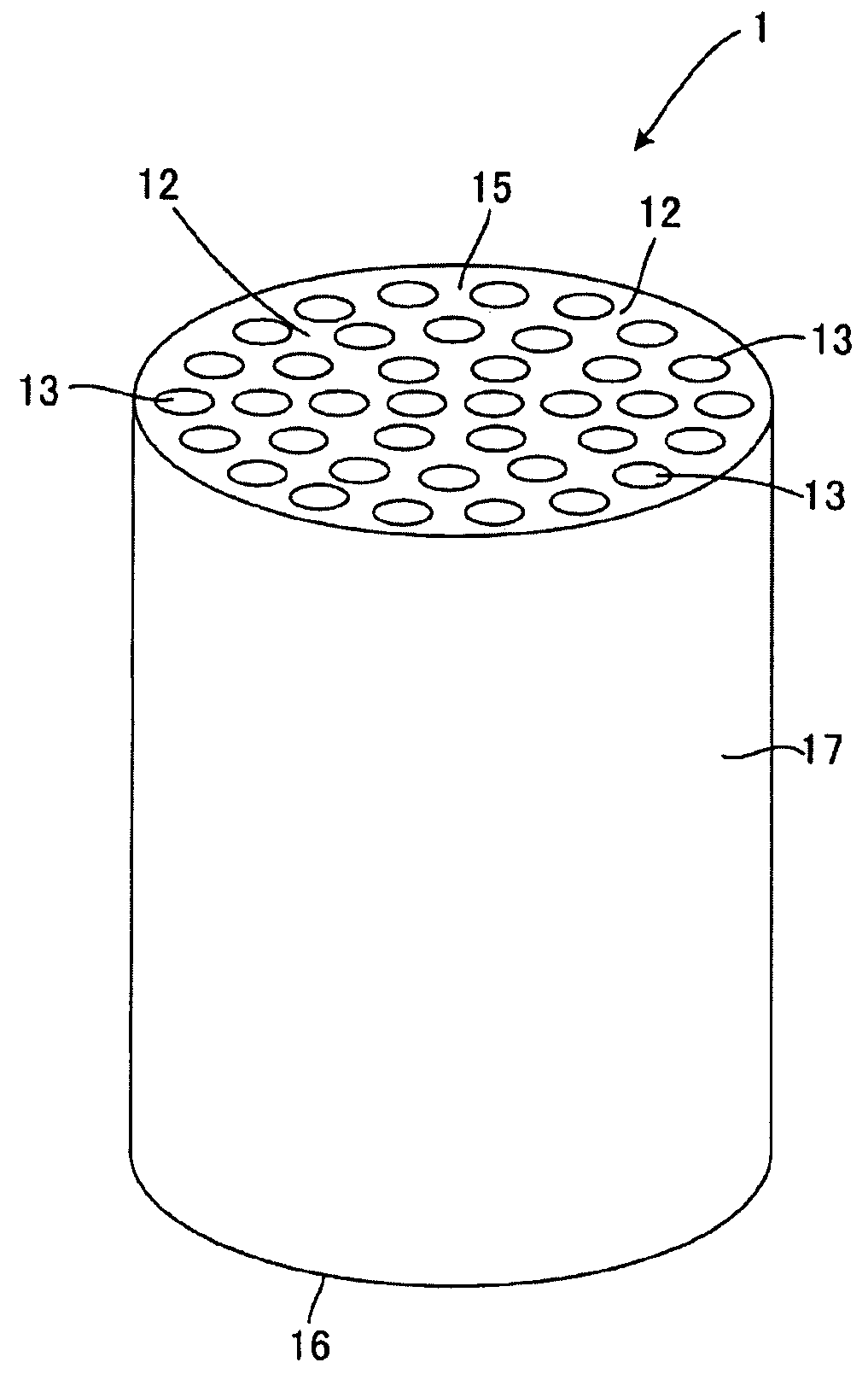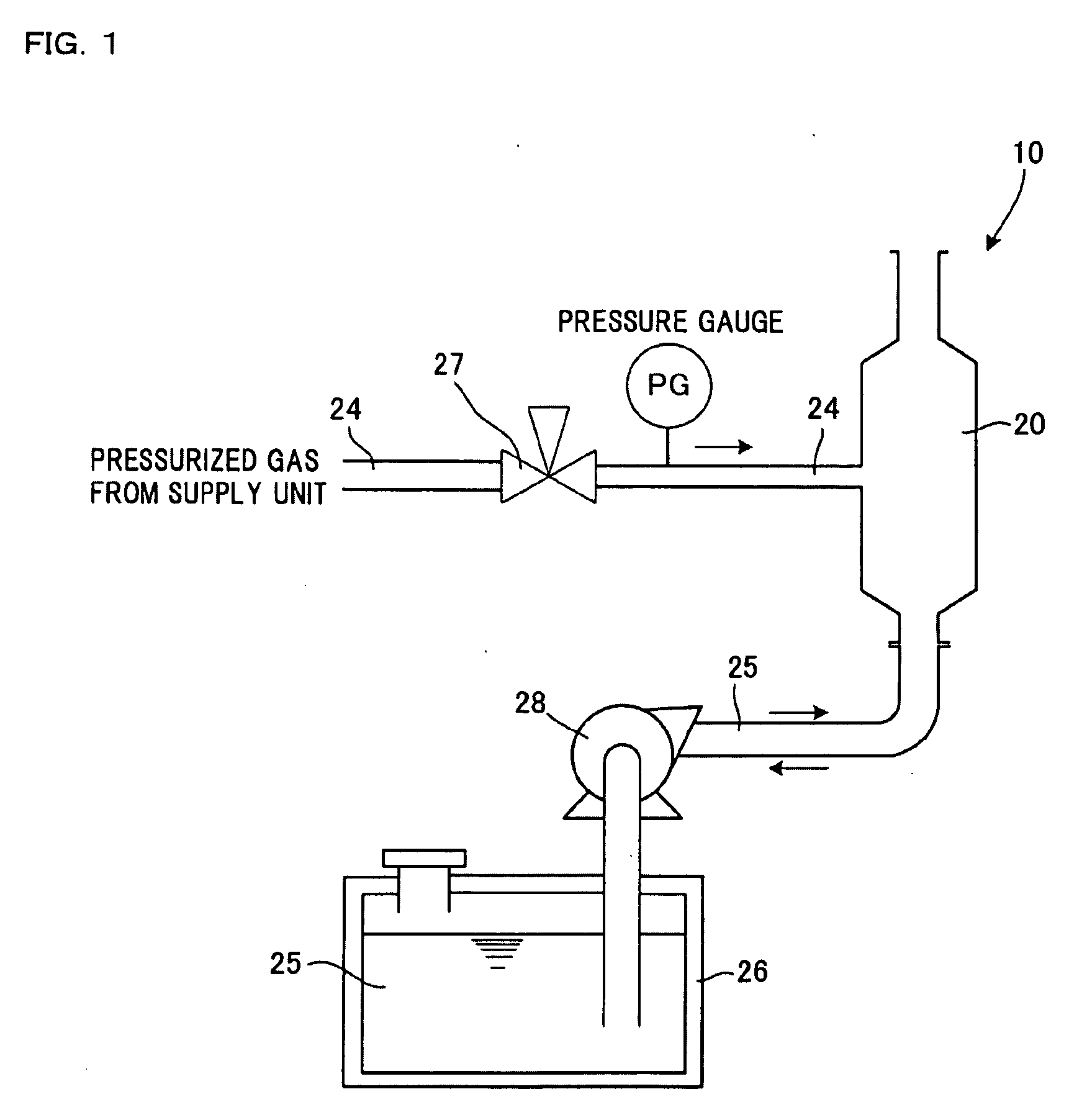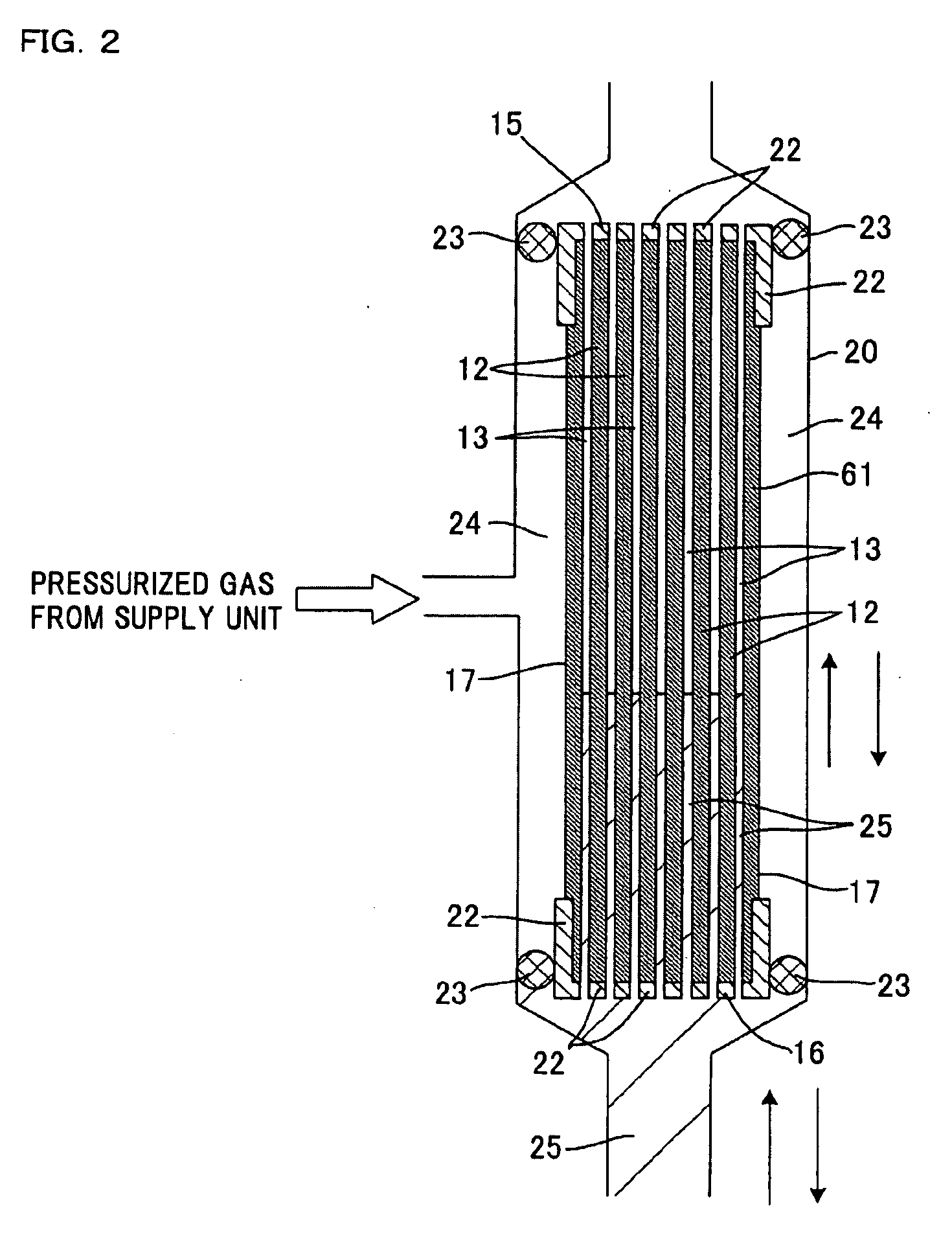Separation membrane-porous material composite and method for manufacturing the same
- Summary
- Abstract
- Description
- Claims
- Application Information
AI Technical Summary
Benefits of technology
Problems solved by technology
Method used
Image
Examples
example 1
[0053]There was manufactured a substrate having a monolithic shape having an average particle diameter of 10 to 100 μm and an average pore diameter of 1 to 30 μm though forming by extrusion and firing. Next, on the inner wall surface of the cells of the substrate, alumina particles having an average particle diameter of 0.3 to 10 μm were deposited by a filtration film-forming method, followed by firing to form an intermediate layer having a thickness of 10 to 1000 μm and an average pore size of 0.1 to 3 μm. On the intermediate layer, alumina particles having an average particle diameter of 0.3 to 1 μm were further deposited by a filtration film-forming method, followed by firing to form a dense layer having a thickness of 1 to 100 μm and an average pore diameter of 0.01 to 0.5 μm. Thus, a porous material was obtained.
[0054]Next, using the apparatus 10 shown in FIGS. 1 and 2, helium gas having a pressure of 1 kPa was charged into the pores of the porous material, and, with pressurizi...
example 2
[0056]A separation membrane-porous material composite was manufactured in the same manner as in Example 1 except that the inside of the pores was pressurized by helium gas having a pressure of 50 kPa and charged into the pores of the porous material. The separation membrane-porous material composite was evaluated by a water-ethanol pervaporation method under the same conditions as in Example 1. Table 1 shows the amount of consumption of the precursor solution used for forming the carbon film and pervaporation performance (a separation factor and flux).
example 3
[0057]A separation membrane-porous material composite was manufactured in the same manner as in Example 1 except that the inside of the pores was pressurized by helium gas having a pressure of 100 kPa and charged into the pores of the porous material. The separation membrane-porous material composite was evaluated by a water-ethanol pervaporation method under the same conditions as in Example 1. Table 1 shows the amount of consumption of the precursor solution used for forming the carbon film and pervaporation performance (a separation factor and flux).
PUM
| Property | Measurement | Unit |
|---|---|---|
| Thickness | aaaaa | aaaaa |
| Thickness | aaaaa | aaaaa |
| Pressure | aaaaa | aaaaa |
Abstract
Description
Claims
Application Information
 Login to View More
Login to View More - R&D
- Intellectual Property
- Life Sciences
- Materials
- Tech Scout
- Unparalleled Data Quality
- Higher Quality Content
- 60% Fewer Hallucinations
Browse by: Latest US Patents, China's latest patents, Technical Efficacy Thesaurus, Application Domain, Technology Topic, Popular Technical Reports.
© 2025 PatSnap. All rights reserved.Legal|Privacy policy|Modern Slavery Act Transparency Statement|Sitemap|About US| Contact US: help@patsnap.com



